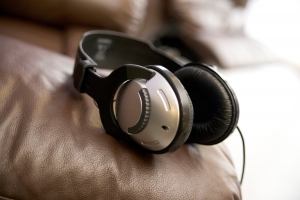Since 2004, serious injuries to pedestrians wearing headphones have more than tripled. Pedestrians who choose to wear headphones are unable to hear cars, bicycles and even trains approaching them. Without these important auditory signals, pedestrians are in serious danger of being run over and injured or killed. 
Massachusetts Law indicates that wearing headphones while driving a car is illegal, but there are no specific rules preventing bicycle riders or walkers from wearing headphones while they travel. As a result, many people fail to recognize just how dangerous this behavior is and they continue to walk or ride around distracted even as the death toll mounts.
Of course, drivers still have a responsibility to watch for others on the road and to stop before striking a pedestrian or bicyclist. If a pedestrian or rider is in an accident and was wearing headphones at the time, the case may become one of comparative fault. These types of cases tend to be more complicated, and an experienced Boston car accident lawyer should be consulted for help in comparative liability cases.
Massachusetts law recognizes modified comparative fault, which means a plaintiff cannot recover if found more at fault than defendants.
Headphone Use and Accident Risk
Recently, an MIT staff columnist shared a personal experience with a headphone-wearing pedestrian who was blocking a bike lane and who did not respond to repeated sounds of a bike bell blaring to alert him to get out of the way. The columnist ended up swerving to avoid the pedestrian since it was impossible to stop due to a line of traffic in the bike lane. Fortunately, no one was injured in this particular accident, but injuries do happen frequently because of people wearing headphones and not paying attention to what is going on around them.
Researchers from the University of Maryland Medical Center studied 116 accident cases between 2004 and 2011 in which injured pedestrians were documented to have had headphones on at the time of the collision. A total of 70 percent of these accidents had resulted in the pedestrian’s death.
The victims of these collisions were primarily young men. In fact, 68 percent of the pedestrians who had been hurt were male, and 67 percent of people who were injured were aged 30 or younger. In 29 percent of the incidents, the driver of the vehicle that struck the pedestrian indicated that some type of warning horn had been blown prior to the crash.
It is unclear from this particular research why the drivers of the vehicles had time to blow a horn to issue a warning, but were unable to slam on their brakes or swerve to avoid the pedestrians in their path. However, while drivers can sometimes prevent accidents by stopping or swerving, there are times when surrounding traffic makes this impossible and a driver has no choice but to strike a pedestrian who won’t get out of the way.
An assessment of who is to blame must always be done on a case-by-case basis in these complex cases. An attorney could help the crash victims to recover at least partial fault for damages in some cases, but the victim’s compensation would be reduced by the percentage of fault he bears for the collision.
If the pedestrian was 100 percent responsible for the accident caused by a dangerous action while wearing headphones, the victim or his surviving family members will not be able to obtain monetary compensation for auto accident losses.
If you were involved in a Boston car accident, contact Jeffrey S. Glassman for a free and confidential appointment to discuss your rights. Call (617) 777-7777.
More Blog Entries:
Distractions Endangering Teen Drivers More Than Older Motorists, Boston Car Accident Lawyer Blog, January 25, 2014
 Boston Car Accident Lawyer Blog
Boston Car Accident Lawyer Blog

